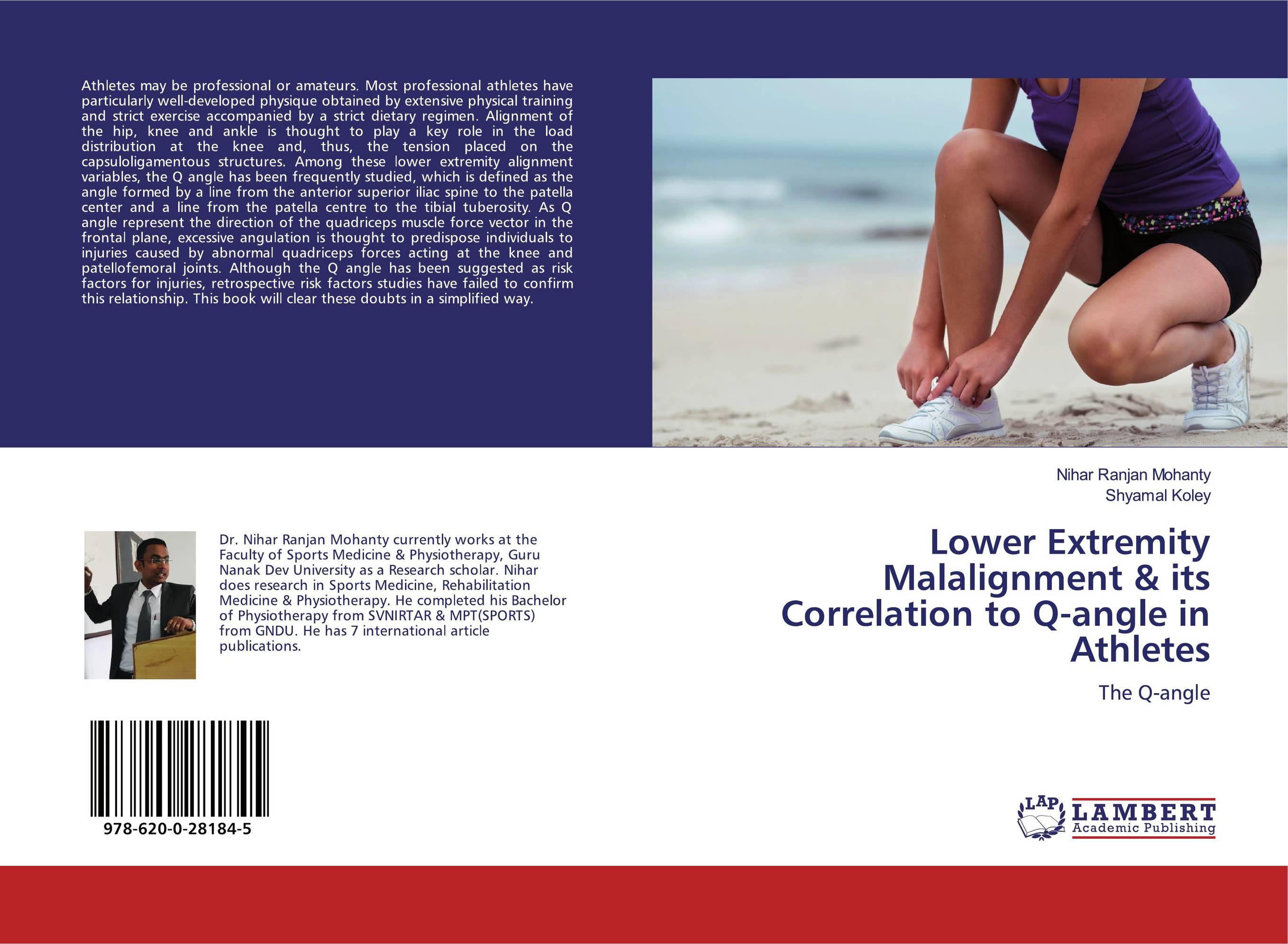| Поиск по каталогу |
|
(строгое соответствие)
|
- Профессиональная
- Научно-популярная
- Художественная
- Публицистика
- Детская
- Искусство
- Хобби, семья, дом
- Спорт
- Путеводители
- Блокноты, тетради, открытки
Lower Extremity Malalignment & its Correlation to Q-angle in Athletes. The Q-angle

В наличии
| Местонахождение: Алматы | Состояние экземпляра: новый |

Бумажная
версия
версия
Автор: Nihar Ranjan Mohanty and Shyamal Koley
ISBN: 9786200281845
Год издания: 2019
Формат книги: 60×90/16 (145×215 мм)
Количество страниц: 64
Издательство: LAP LAMBERT Academic Publishing
Цена: 23350 тг
Положить в корзину
| Способы доставки в город Алматы * комплектация (срок до отгрузки) не более 2 рабочих дней |
| Самовывоз из города Алматы (пункты самовывоза партнёра CDEK) |
| Курьерская доставка CDEK из города Москва |
| Доставка Почтой России из города Москва |
Аннотация: Athletes may be professional or amateurs. Most professional athletes have particularly well-developed physique obtained by extensive physical training and strict exercise accompanied by a strict dietary regimen. Alignment of the hip, knee and ankle is thought to play a key role in the load distribution at the knee and, thus, the tension placed on the capsuloligamentous structures. Among these lower extremity alignment variables, the Q angle has been frequently studied, which is defined as the angle formed by a line from the anterior superior iliac spine to the patella center and a line from the patella centre to the tibial tuberosity. As Q angle represent the direction of the quadriceps muscle force vector in the frontal plane, excessive angulation is thought to predispose individuals to injuries caused by abnormal quadriceps forces acting at the knee and patellofemoral joints. Although the Q angle has been suggested as risk factors for injuries, retrospective risk factors studies have failed to confirm this relationship. This book will clear these doubts in a simplified way.
Ключевые слова: height, Weight, Body Mass Index (BMI), total leg length, lower leg length, tibiofemoral angle, femur anteversion, q-angle, genu recurvatum, tibial torsion, navicular drop



